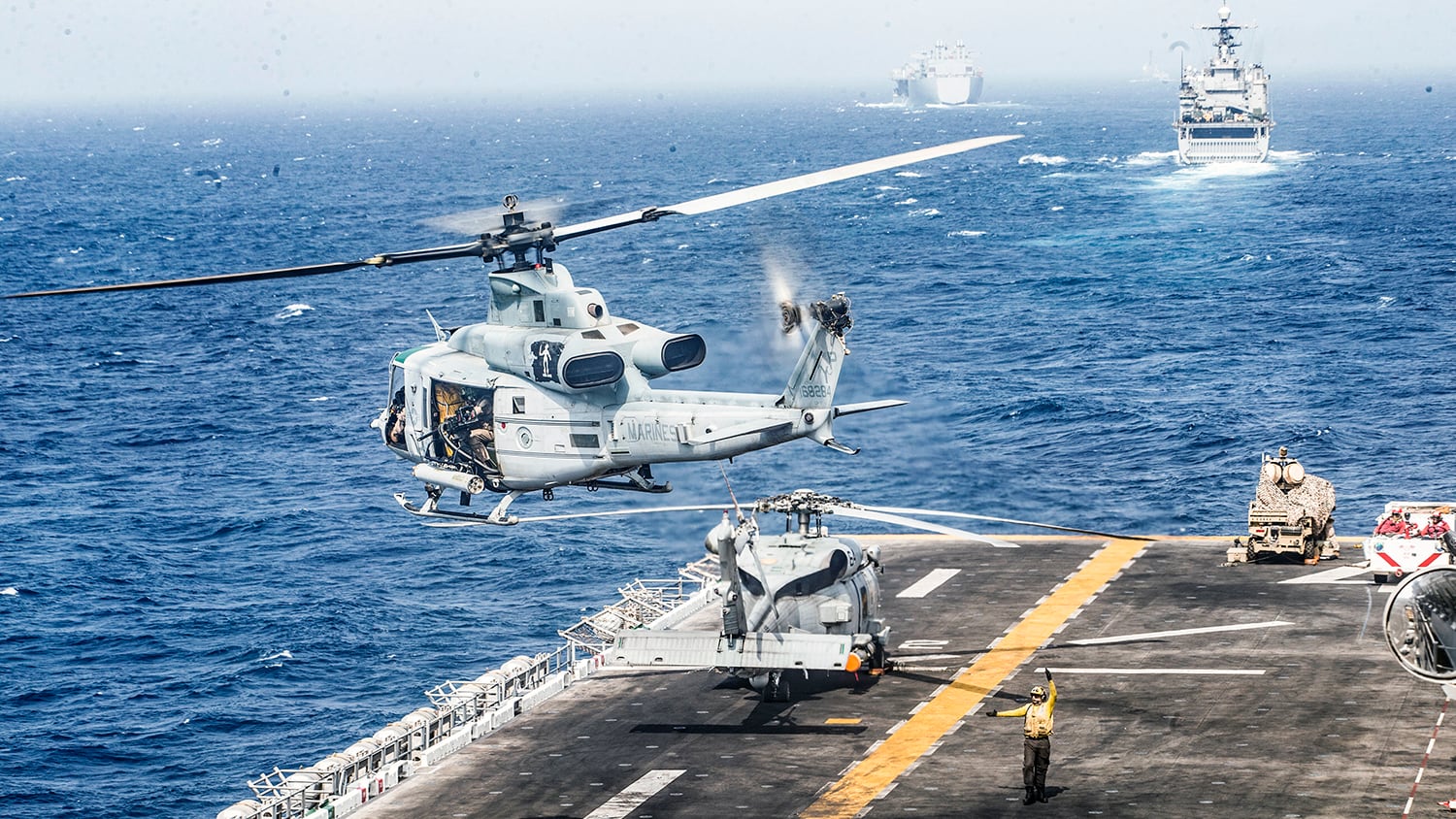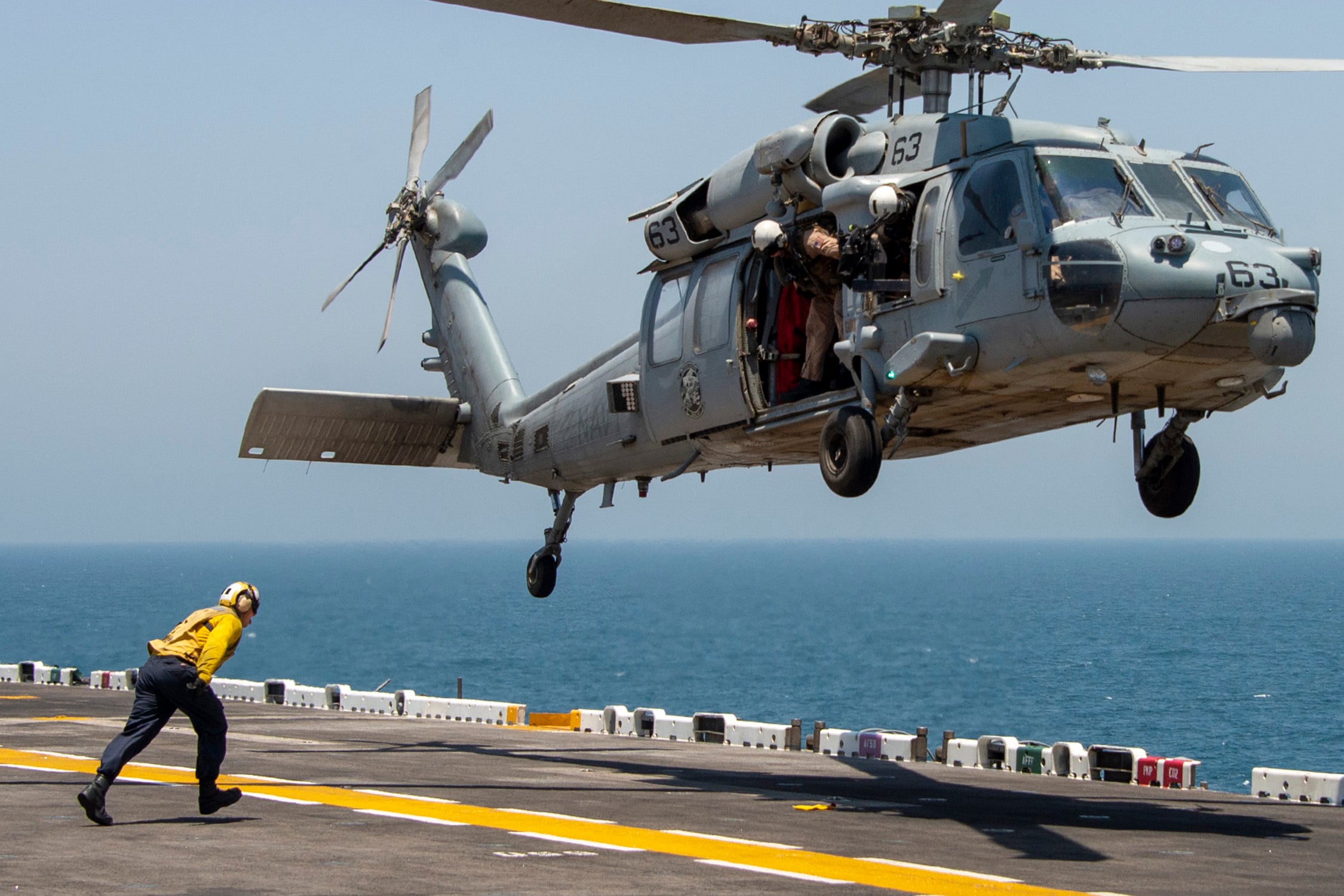Despite ballyhoo about the need for military cyber, electronic warfare and more tech-adept forces for future war, the Navy and Marines are testing war tactics more common nearly 100 years ago.
No longer can Marines and sailors take for granted uninterrupted electronic communications at sea or on the battlefield.
Tech-capable forces from Russia to China are packing capabilities that can jam U.S. systems or hone in on radio communications to find U.S. forces and ships at sea.
That’s why Marines and sailors aboard the Wasp-class amphibious assault ship Boxer tested in early August an old silent communications tactic used during World War II, according to a command release.
RELATED

The Boxer currently is floating with 11th Marine Expeditionary Unit somewhere near the Persian Gulf.
The tactic is called a “beanbag drop," and during World War II pilots used to drop weighted beanbags carrying messages onto the decks of ships to avoid having their messages intercepted by enemy forces.
In early August, crew members with Helicopter Sea Combat Squadron flying an MH-60S Seahawk conducted a beanbag message drop onto the Boxer as a proof of concept to deliver messages without relying on radio systems, the release detailed.
It’s a tactic liken to the carrier pigeons of World War I, which carried important tactical battlefield messages across the front lines.
The Navy’s experimentation with a communications tactic used in World War II sheds a small light on its tactical thinking and how it plans to prepare sailors and Marines for a major bout with adversaries with the capability to find, jam and sink U.S. Navy ships at sea.

“We’ve got the best communication technology onboard our helos [helicopters] but today we practiced the use of a more conventional form of aircraft-to-ship communication in the event electronic communication is not an option,” Navy Lt. Taryn Steiger, the pilot who flew the HSC-21 Seahawk that dropped the beanbag, said in the release.
After the message was dropped from the MH-60 onto the deck of the Boxer, a sailor simply ran and scooped up and delivered the message, the release said.
“The purpose of the bean-bag drop was to show timely pilot-to-ship communication can be done without electronic transition," Lt. Cmdr. Michael Brown, the HSC-21 detachment commander, said in the release.
“Together HSC-21 crew and Boxer demonstrated timely communication from the aircraft to the ship during EMCON [emissions control] procedures."
Gen. Robert B. Neller, the former commandant of the Marine Corps, has oft repeated that he would turn off the net to force Marines to fight and train in environments where GPS and communications are degraded.
Marines have been training and experimenting with reducing their radio and visible footprint from Norway to the battlefields of Syria.
Shawn Snow is the senior reporter for Marine Corps Times and a Marine Corps veteran.





